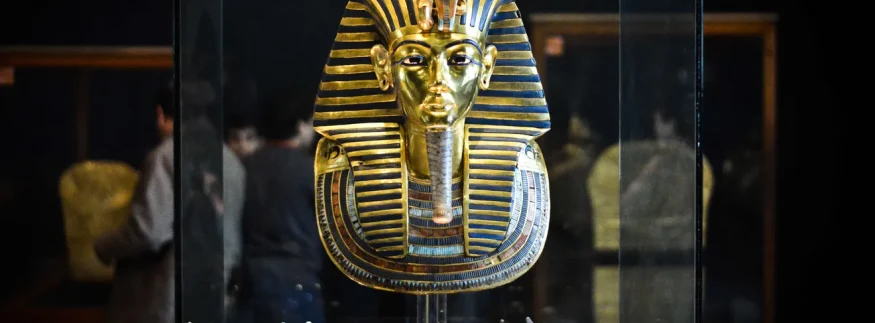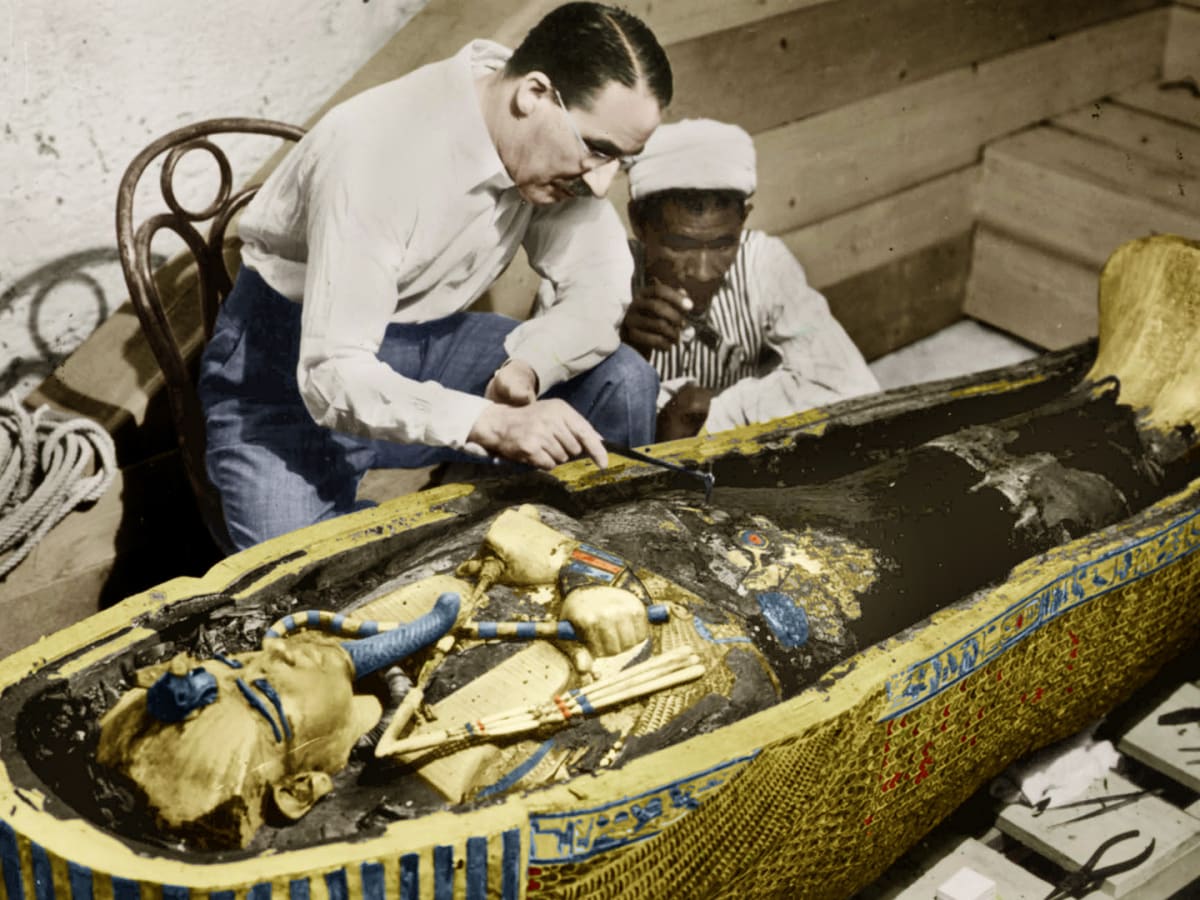
Nesrien Abdelkader
via Mohamed El-Shahed/Getty Images
As we mark the 100th anniversary of the discovery of King Tutankhamun’s tomb, Egypt is celebrating the history of its most famous pharaoh. Despite his short rule, King Tut has become a global icon and symbol of Egypt’s rich history.
How Did Egypt Celebrate?

via Universal History Archive/Universal Images Group via Getty Images
Egypt has been preparing special programmes and festivities to mark the centennial celebration of this historic event. The Ministry of Tourism and Antiquities organised a visit to the king’s tomb in the Valley of the Kings on Luxor’s West Bank in honour of its discovery.
During the visit, Zahi Hawass, world-renowned Egyptian archaeologist and former antiquities minister, and Secretary-General of the Supreme Council of Antiquities Mostafa Waziri accompanied ambassadors from a number of countries, including the United Kingdom, Poland, Italy, Mexico, Croatia, the European Union, the United States, Denmark, Chile and Singapore. Also present were the UN Resident Coordinator in Egypt, the Canadian cultural attaché, local and foreign influencers and media representatives. Visitors were given details about the tomb’s discovery by British archaeologist Howard Carter in 1922.
Other events include the inauguration of the Carter House, the archaeologist’s rest house which has now become a tourist spot following its restoration. The first-ever virtual tour of the tomb with all artefacts intact was also launched by the Ministry of Tourism and Antiquities on November 4th. Museums across the country opened a series of archaeological and art exhibitions, while the American Research Center also organised a scientific conference to discuss the latest research concerning King Tutankhamun and his tomb.
Who was King Tutankhamun?

Via MOHAMED EL-SHAHED/AFP/Getty Images
The young pharaoh ascended the throne at just nine years old and ruled for ten years before passing away at the age of 19 around 1324 B.C.
Also referred to as the “boy-king”, Tutankhamun was not exactly the majestic figure that some may have in mind. As the product of incest, the king was a frail, disabled boy who suffered from malaria and a bone disorder, according to DNA studies. Rather than the spitting image of a mighty sun god, experts believe King Tutankhamun looked relatively skinny, needed a cane to walk, and likely had an overbite.
Despite his short reign, King Tutankhamun has become Egypt’s most well-known pharaoh, largely due to the trove of treasures left behind in his tomb. However, the actions he took while king was mostly negated by his successors, and he was largely unknown to the world before his tomb was found.
A Look Back at the Initial Discovery

via Griffith Institute, University of Oxford
King Tutankhamun’s tomb was first unearthed on November 4th, 1922, when Carter and his workers discovered a step leading to it in the Valley of the Kings in Luxor.
Incredibly, the grave was undisturbed by robbers and contained thousands of artefacts. The massive excavation process took place over several years as they explored the four-room tomb.
Some of the most important finds include a stone sarcophagus containing three golden coffins, one of which was found to contain the body of King Tutankhamun, which had been preserved for over 3000 years. The king’s iconic golden mask was also found inside his tomb and was recently moved, alongside many other artefacts, to the Grand Egyptian Museum.
recommended
 Health & Fitness
Health & Fitness
Blu Relay Race: Kayaking Towards a Sustainable Future
Nile Activities Rowing +2 Arts & Culture
Arts & Culture



